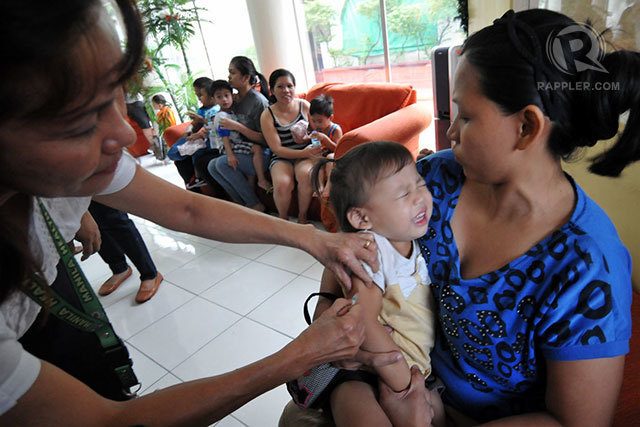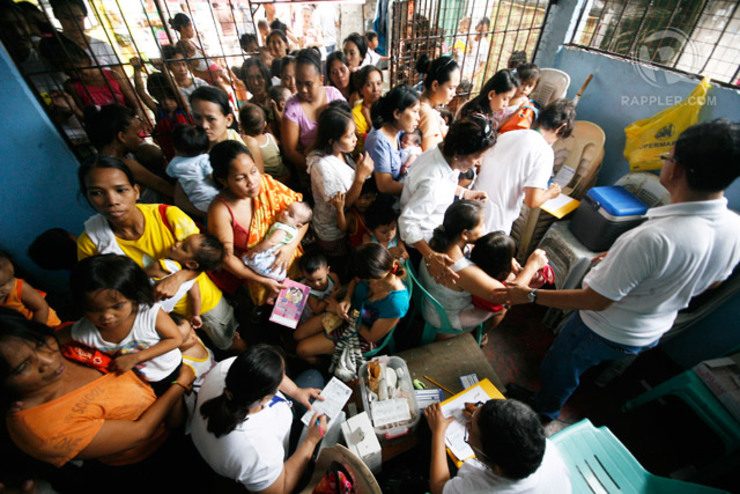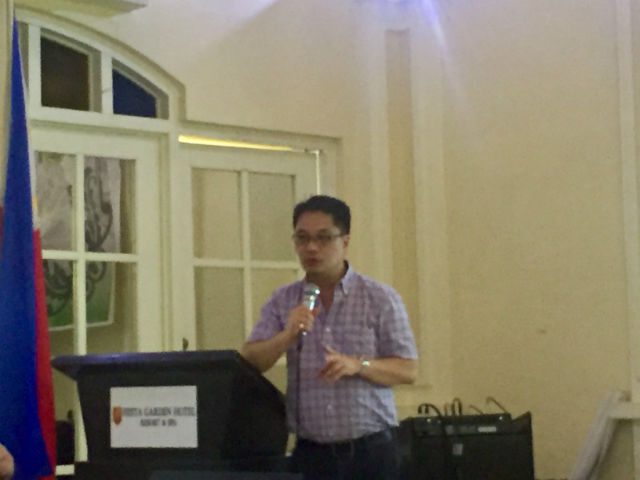SUMMARY
This is AI generated summarization, which may have errors. For context, always refer to the full article.

ILOCOS SUR, Philippines – Almost a year after the Dengvaxia controversy caused a media frenzy, the Department of Health (DOH) said people are still scared of government’s free vaccines and the biggest losers are Filipino children.
DOH National Immunization Program Manager Maria Silva said on Wednesday, September 26, parents are still unwilling to have their children immunized in their various vaccination programs.
She said the “very low (vaccination) coverage for most regions” in the Philippines has resulted in several outbreaks of preventable diseases such as measles in early 2018.
“Not only were the 3 regions plus Cebu province that implemented dengue vaccination affected because of the dengue controversy. But it’s all over the Philippines” Silva said during a forum of health journalists.
She added, “Because of controversies left and right left by the dengue vaccine, hindi tayo makausad-usad (we can’t move forward). This is one of the challenges that is really putting us down.” (READ: ‘Panic’ over Dengvaxia harms other vital vaccination programs, health experts say)
In February 2018, Health Undersecretary Enrique Domingo said that only 60% of children were getting their scheduled vaccines. The DOH’s annual vaccination rate target is between 85 to 90%. A few months later, Domingo said still we have not reached targets.
“Hindi pa tayo nakaka-90%…. 50 to 60% ang coverage natin ngayon,” he said. (We haven’t hit 90%, our coverage now is still about 50 to 60%.)
The Dengvaxia controversy started in November 2017 vaccine after its manufacturer Sanofi Pasteur released an advisory warning that its vaccine could cause a person to later develop severe dengue if he or she had not been infected by the virus prior to immunization.
Latest data showed 19 out of 154 kids died of dengue despite getting immunize with the Dengvaxia vaccine.
What programs were affected? In particular, Silva said the health department’s “Ligtas Tigdas” supplemental immunization activities (SIA) as well as the school-based and community immunization programs took the biggest hits.
The “Ligtas Tigdas” SIAs were carried out to address the several measles outbreaks that occurred in early 2018. The SIAs were done in Metro Manila and Mindanao to achieve “herd immunity” status, wherein people who already have measles will be “walled off” from the rest of the population.
“(The Dengvaxia issue) resulted to a very low MCV1 and MCV 2 (measles continuing vaccine) coverage, which is why we had outbreaks left and right,” Silva said.
Data from the DOH showed that in Metro Manila, as little as 36% of children received the measles vaccine during the campaign.

Silva also said the DOH’s school-based immunization program was also hit hard.
Focus group discussions with health workers, community members, and local leaders done by the health department revealed this much since this was the platform used to administer the risky dengue vaccine introduced under then-Health Secretary Janette Garin in April 2016. (TIMELINE: Dengue immunization program for public school students)
“Pagdating ng school-based immunization na regular, yun yung may recall kasi nila sa Dengavaxia….. Ang daming nanay na hindi nagbigay ng consent (para mabakunahan) for fear na baka ma-dengvaxia daw iyon. Yun yung greatly affected,” she said.
(When it comes to the regular school-based immuninization, this is what had recall for Dengvaxia…. Many mothers did not give consent for their children (to be vaccinated) for fear it might end up like Dengvaxia. That’s what has been greatly affected.)
This alarmed the DOH as it is through the school-based immunization program that vaccines for diseases like measles, rubella, tetanus, diphtheria, and cervical cancer are given to elementary students.
Silva noted a drastic drop in the human papilloma vaccines for cervical cancer program. From 77% of female students covered for its first dose, only 8% availed of the second dose. She added the refusal rate for the vaccine ranged from 50% to 80%, with Metro Manila having the highest refusal rate.
The SIAs that were community based or done done door-to-door were also greatly affected. Silva again attributed this to parents’ recall of Dengvaxia, which had been expanded to cover communities under then-Health Secretary Paulyn Ubial.
“Nagbahay-bahay din sila. So noong may measles vaccination, na nag-bahay bahay yung mga (health) workers ay tinatago yung mga nanay ang kanilang mga anak,” Silva said. (They went door-to-door for measles vaccination. And when [health] workers went to homes, mothers would hide their children.)

Domingo likewise told reporters that in Metro Manila, health workers would spend up to 30 minutes trying to convince parents to have their children vaccinated.
“Hirap kami sa NCR. Kasi hanggang ngayon, mataas pa rin ang refusal rate natin,” he said, as the DOH wants to cover millions in the capital. (We’re struggling with NCR. Until now the refusal rate is high.)
How is the DOH trying to address the issue? A “mixed-strategy” approach is being eyed by the DOH as discussions also showed that individuals willingness to be vaccinated may depend on where immunization was given.
For instance, Silva said that routine immunization for babies in health centers were not greatly affected in the aftermath of the Dengvaxia controversy. Meanwhile, health workers also found that in some areas, more residents would bring their children for vaccinations if there was a designated spot to give out immunization shots.
Seeing this was the case, Silva said the DOH would leave it to the discretion of health workers who were the “best authority” to determine what strategy would be used to serve communities.
Silva also hoped that over time, it would be the norm once again to have children vaccinated. “Dapat ang norm, magapapabakuna ang nanay ng kaniyang mga anak because that’s actually a child’s right na ma-protektahan against vaccine preventable diseases,” she said.
(The norm should be that mothers have their children vaccinated because it’s a child’s right to be protected from vaccine-preventable diseases.)
Domingo added, “Tiyaga, (Work harder) you just have to get trust back.” – Rappler.com
Add a comment
How does this make you feel?
There are no comments yet. Add your comment to start the conversation.